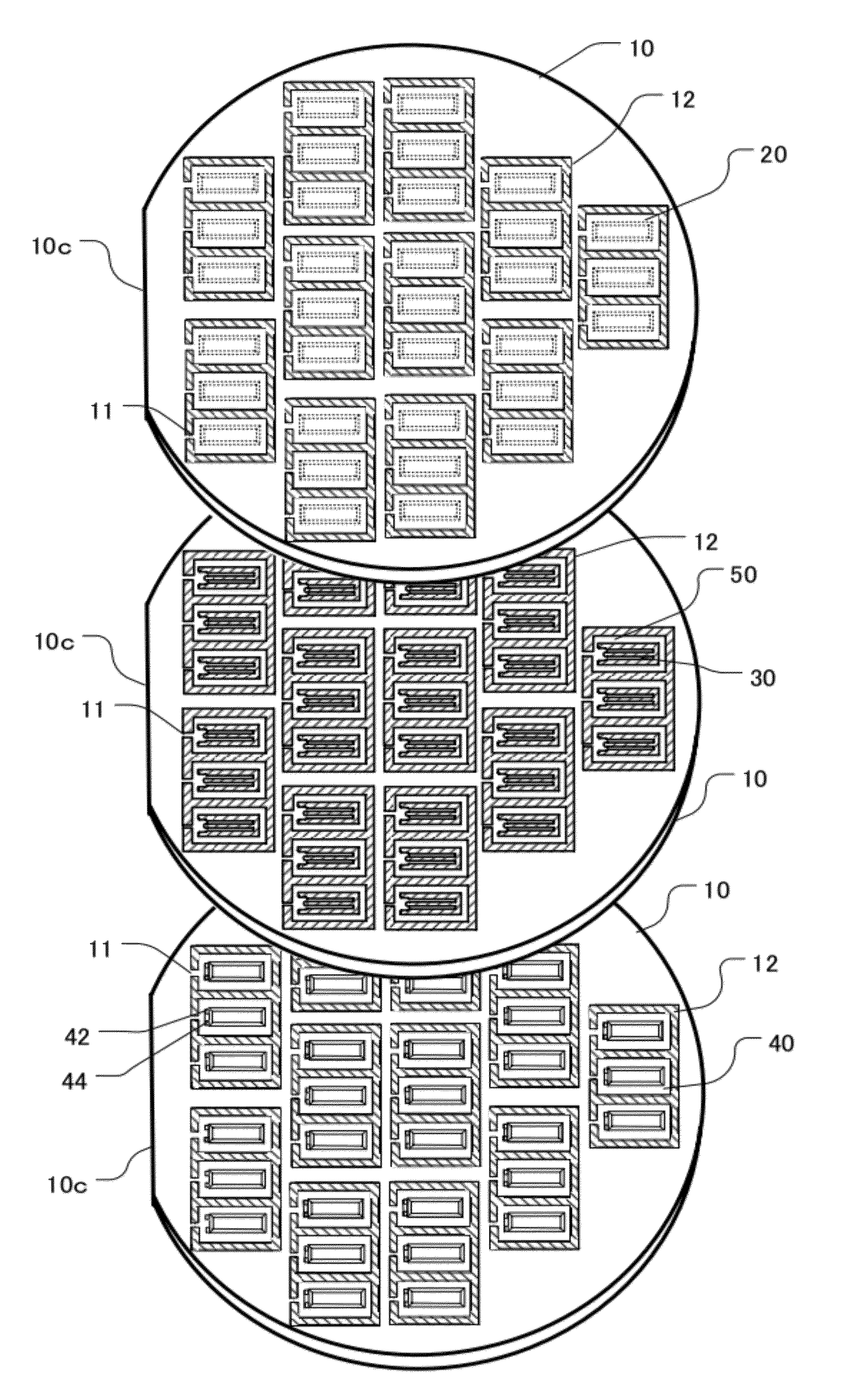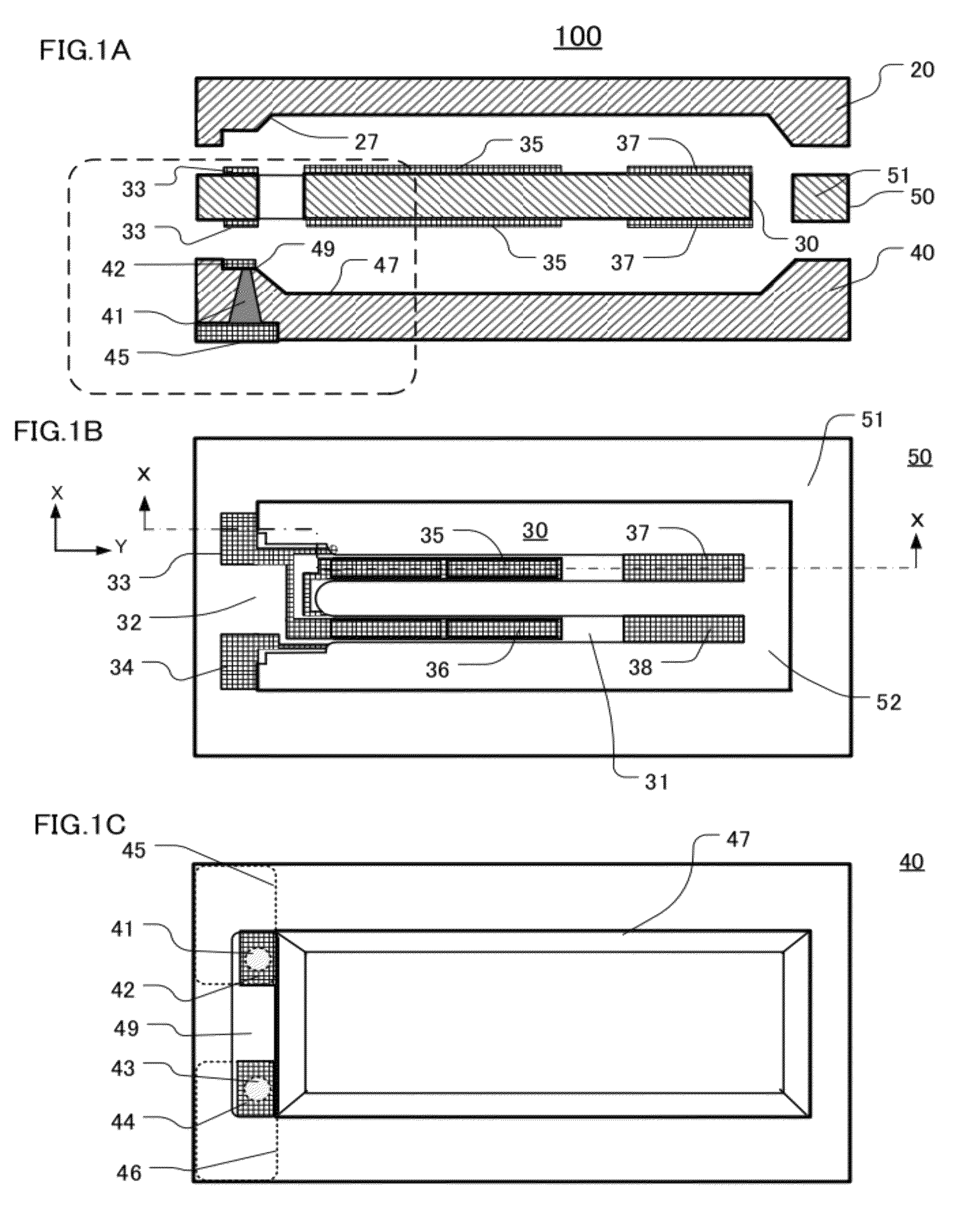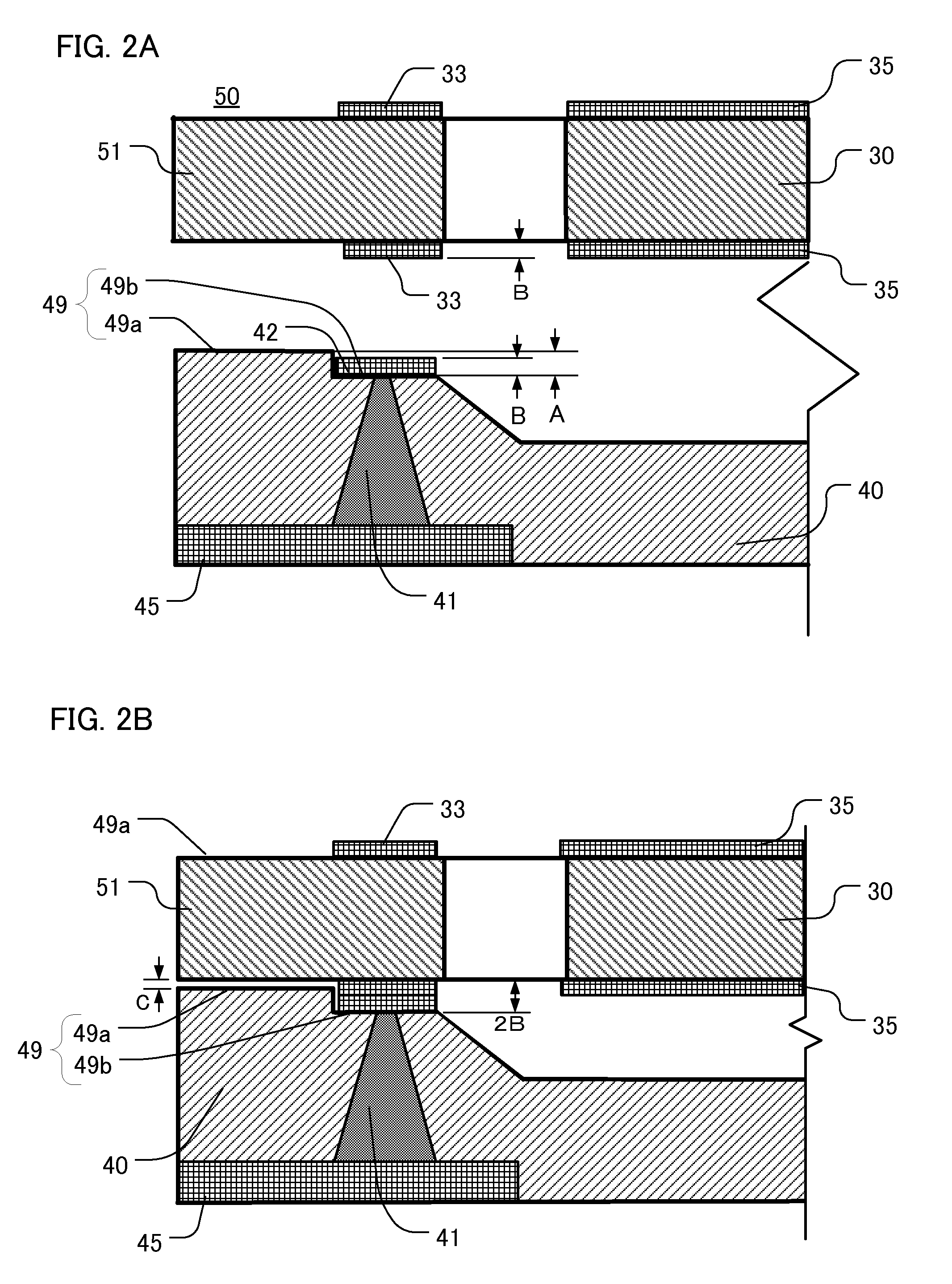Methods for manufacturing crystal devices
a technology of crystal devices and manufacturing methods, which is applied in the direction of manufacturing tools, magnetic bodies, and semiconductor/solid-state device details, etc., can solve the problems of reducing affecting the reliability of the device, and the connection(s) between the electrode pattern and the connection electrode(s) may not be sufficient for the desired reliability, etc., to achieve the effect of simple and easy manufacture of the device, reduced item cost, and easy mass production
- Summary
- Abstract
- Description
- Claims
- Application Information
AI Technical Summary
Benefits of technology
Problems solved by technology
Method used
Image
Examples
first embodiment
of Method for Bonding Crystal Parts and Electrodes
[0040]FIGS. 2A and 2B are enlarged elevational sections of the crystal frame 50 and package base 40 of the first embodiment. FIG. 2A shows the crystal frame 50 and package base 40 vertically separated from each other. FIG. 2B shows a corresponding portion of the crystal frame 50 layered onto the package base 40, but not yet bonded together by siloxane bonding.
[0041]In FIGS. 2A and 2B, at locations where the first connecting electrode 42 and the second connecting electrode 44 (see FIG. 1C) are formed on the package base 40, a respective step portion 49 is formed. See FIG. 2G, which shows two step portions 49A, 49B. Each step portion 49A, 49B includes a respective first step 49a and a respective second step 49b. The second step 49b is formed by wet etching and has a depth of 2500 Å to 3000 Å relative to the first step 49a. The thickness B of each of the first extraction electrode 33 and of the second extraction electrode 34 (not illust...
second embodiment
[0045]FIG. 2C is an enlarged elevational section of the crystal frame 50 and package base 40 of a second embodiment. On the lower surface of the crystal frame 50, a step portion 59 (configured as a depression and including a first step 59a and a second step 59b), is situated where the first extraction electrode 33 and second extraction electrode 34 (see FIG. 1C) are formed. The first step 59a is a respective portion of the lower main surface of the crystal frame (FIG. 2C). The depth A of the second step 59b relative to the first step 59a is 2500 Å to 3000 Å. The thickness B of each of the first and the second electrodes 33, 34, and of plus each of the first and second connection electrodes 42, 44, respectively, is 1500 Å to 2000 Å, so that the total thickness of each pair of these electrodes (33, 42 and 34, 44) is 3000 Å to 4000 Å. The difference between the total thickness (2×B) of a pair of electrodes and the depth A of the step portion 59 is a space C (FIG. 2B) having a thickness...
third embodiment
[0046]FIG. 2D is an enlarged elevational section of a portion of the crystal frame 50 and package base 40 of a third embodiment. On the lower surface of the crystal frame 50 stepped projections 59′ are formed (only one is shown). Each stepped projection 59′ includes a respective first step 59′a and a respective second step 59′b. Each stepped projection 59′ is formed where the first extraction electrode 33 and second extraction electrode 34 (see FIG. 1C), respectively, are formed. The height A of the second step 59′b relative to the height of the lower main surface of the crystal frame 50 (i.e., the first step 59′a) is 2500 Å to 3000 Å. The total thickness of an extraction electrode and corresponding connection electrode is 3000 Å to 4000 Å. The difference in total electrode thickness (2×B) and the depth A is a space C having a height of 500 Å to 1000 Å. By maintaining the thickness of the space C in this manner, the first and second extraction electrodes 33, 34, are reliably connect...
PUM
| Property | Measurement | Unit |
|---|---|---|
| temperature | aaaaa | aaaaa |
| melting point | aaaaa | aaaaa |
| melting point | aaaaa | aaaaa |
Abstract
Description
Claims
Application Information
 Login to View More
Login to View More - R&D
- Intellectual Property
- Life Sciences
- Materials
- Tech Scout
- Unparalleled Data Quality
- Higher Quality Content
- 60% Fewer Hallucinations
Browse by: Latest US Patents, China's latest patents, Technical Efficacy Thesaurus, Application Domain, Technology Topic, Popular Technical Reports.
© 2025 PatSnap. All rights reserved.Legal|Privacy policy|Modern Slavery Act Transparency Statement|Sitemap|About US| Contact US: help@patsnap.com



